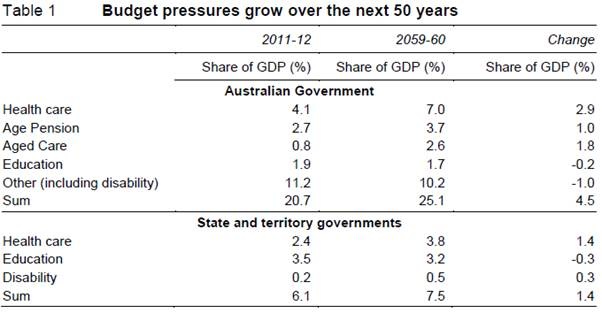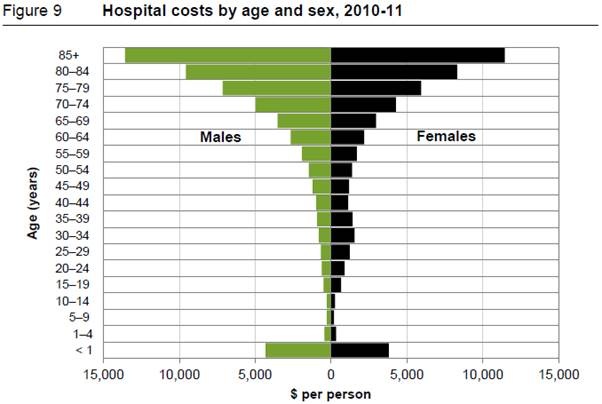How to stem a health care haemorrhage
Health care expenditure should become an immediate priority for the Abbott government. Recent reports suggest that health care spending will be the central cause of a growing budgetary blackhole.
The Productivity Commission report on An Ageing Australia received a lot of attention over the past few days and rightfully so. I analysed some of the issues on Friday, focusing mainly on the age pension and the broader budgetary effects of an ageing population (Ageing pension policies will cripple Australia’s growth, November 22). But there are a number of other issues and angles worth discussion – and health care expenditure is one of the most important.
The Productivity Commission estimates that an ageing population will create a hole in government budgets of around 6 per cent of nominal GDP. Around two-thirds of that is due to rising health care costs – an extra 2.9 per cent for federal governments and 1.4 per cent to state and local governments. Without reforms to health care policies and expenditure, it will matter little what the government does in other areas such as aged care and pensions.

The connection between an ageing population and health care costs is fairly obvious. Quite simply, health care costs rise sharply with age because older people consume more health care services. The report says that in 2011, the cost of Pharmaceutical Benefits Scheme drugs per person aged 75 or older was nearly 50 times greater than the cost per person aged under 18 years. A similar relationship is apparent for hospital usage.

Health care expenditure also tends to rise over time due to technological innovations and improved services. Growth in health care expenditures typically exceed nominal GDP growth; consequently, health care expenditure is expected to rise as a share of GDP and increasingly so as the population ages.
Productivity gains are the best way of containing health care costs. The Productivity Commission report mentions a study that found that there were around 200 procedures in Australian hospitals where the cost can vary from half to around one-and-a-half times the average cost, depending on the hospital undertaking the procedure. It is clear that there are significant differences in what constitutes best practice across Australia’s hospitals, and therefore significant opportunities for productivity gains.
Another important factor is a continued push towards evidence-based procedures. This is probably more an issue in the United States given their tendency to sue first and ask questions later, but there are a range of expensive procedures which either do not work or provide limited benefits over a cheaper alternative. In crude economic terms, this is about resource allocation – how to obtain the best health outcomes per dollar spent.
One solution to address this is greater collaboration between hospitals to help determine best practice and which procedures are the most effective. Given the Australian medical system is primarily a public affair, greater collaboration across health providers should not be too difficult.
I’d also remove the private health insurance rebate. If private health insurance is worth having then you shouldn’t need to bribe people to take it out. The private health insurance rebate is estimated to cost the government around $5.5 billion per year – money which could be better used to cover a national dental scheme or a significant portion of the National Disability Insurance Scheme.
Personally I’d get rid of private insurance completely. There are few health care procedures that can be provided more efficiently by the private sector compared with the public sector. Private health insurance is more costly while providing no identifiable improvement in health outcomes – even if I do like my subsidised massages. Private health insurance may even increase the cost of government health care by reducing the market power of the government.
Finally, there needs to be greater emphasis on preventative measures. Many adverse health outcomes, including accident trauma, lung cancer, heart disease and diabetes, can be mitigated to some extent by preventative measures. The short-term cost of prevention is typically much less than the health costs that eventually occur.
Australia, much like the United States, has a budget that is tied to the health care sector. But there appears to be a range of productivity gains that can help to contain costs even as our country ages. The United States has already made some progress on that front, although its issues vastly exceed our own. Reforming the health industry and providing the appropriate incentives for efficiency and cost reduction should quickly become part of the government’s agenda – particularly a government that is publicly so keen on fiscal discipline.













